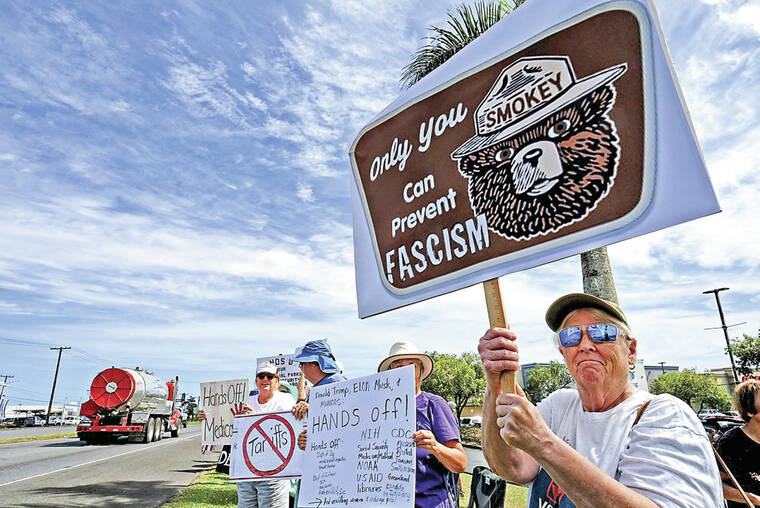HILO — Hawaii island forestry managers say one-third to one-half of a Big Island forest has been impacted by the erupting Kilauea volcano.
HILO — Hawaii island forestry managers say one-third to one-half of a Big Island forest has been impacted by the erupting Kilauea volcano.
The 2-square-mile (5-square-kilometer) Malama Ki Forest Reserve, located east of the volcano, is home to a young ohia-dominated forest and sub-populations of forest birds such as the Hawaiian honeycreepers, the Hawaii amakihi and apapane.
Researchers found Hawaii amakihi are uniquely tolerant to avian disease.
With further expected loss of forest habitat and defoliation due to lava inundation and volcanic emissions, the remnant and sub-populations may no longer persist, rapidly decline or become further fragmented and/or contract in range, Steve Bergfeld said, the Hawaii island branch manager for the Department of Land and Natural Resources’ Division of Forestry and Wildlife.
The reserve also holds a public year-round hunting area, which foresters predict will be greatly reduced due to loss of forest and the effects to feral animals.
Foresters also expect a loss in the continuity of research on disease tolerance, sub-population genetics and the measurable effects of rapid ohia death to the forest bird community in the reserve and surrounding area.
However, the department is not planning on going out to catch wildlife and remove them, Bergfeld said.
In the Puu Makaala Natural Area Reserve, north of the Kilauea volcano, staff are keeping a close watch on 11 endangered Hawaiian crow, or alala, that were released back into the mostly-native forest last fall, as well as 80 alala at the Keauhou Bird Conservation Center.

Subscribe today for unlimited access.
Already a subscriber?
Login
Not ready to subscribe?
Register for limited access.
If you have a print subscription but require digital access,
activate your account.





